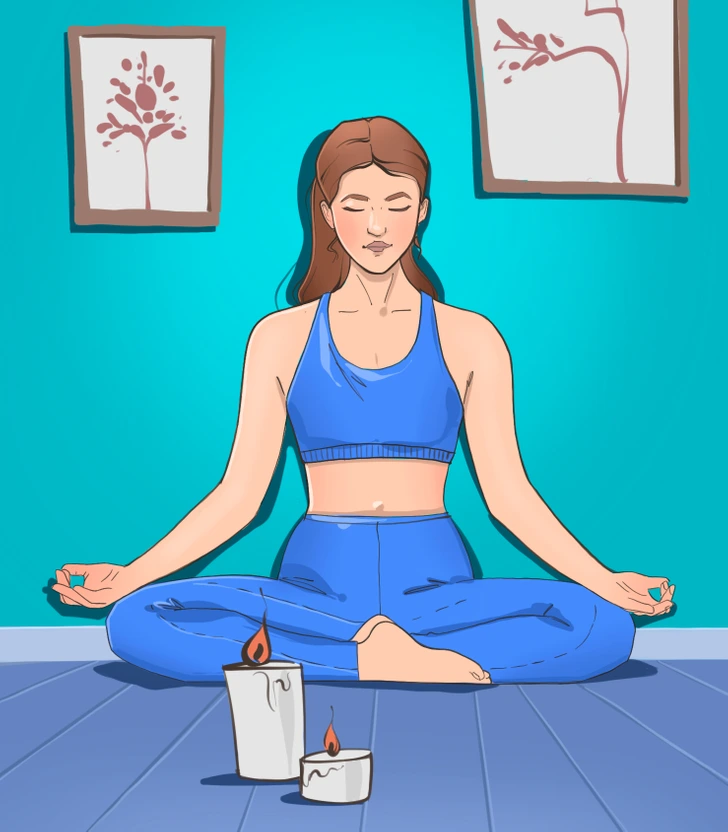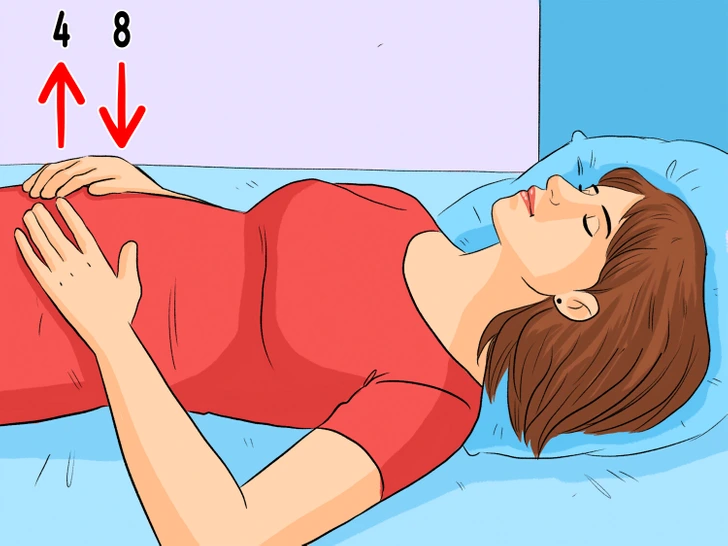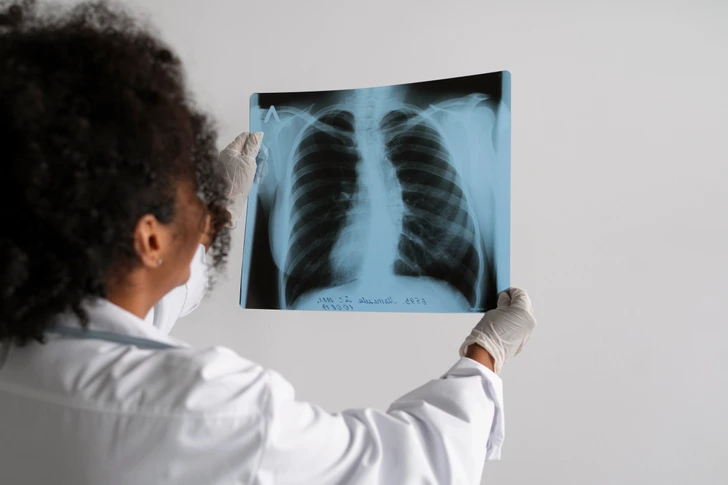In today’s fast-paced world, people often find themselves struggling with daily challenges like stress, anxiety, and even the difficulty of falling asleep at night. These issues can seem overwhelming, but there’s a scientifically backed method to help address them: the 4-7-8 breathing technique. This technique has gained popularity for its ability to promote relaxation, calm anxiety, and even improve sleep. In this article, we’ll explore how this simple but effective practice works and how you can incorporate it into your daily routine for better mental and physical health.
What is the 4-7-8 Breathing Technique?

Inspired by ancient Pranayama practices, the 4-7-8 breathing technique was popularized by Dr. Andrew Weil in 2015. This breathing method involves inhaling for four seconds, holding your breath for seven seconds, and then exhaling for eight seconds. The rhythm of the 4-7-8 breath is designed to balance the autonomic nervous system, helping to induce a feeling of calmness and tranquility. It’s a quick and portable stress-reliever that can be done anywhere and at any time, making it ideal for those looking to combat daily stressors and sleep issues.
How to Practice the 4-7-8 Breathing Technique
This technique can be practiced in any position, but it’s recommended to sit with a straight back when learning the method. Dr. Weil advises pressing the tip of your tongue against the ridge of tissue just behind your upper front teeth throughout the entire exercise. If this feels strange, you can gently purse your lips as you exhale through your mouth. Follow these simple steps to practice:
Video:
Sleep, Anxiety, and Insomnia: How to Sleep Better When You’re Anxious
- Exhale fully through your mouth, making a whooshing sound.
- Close your mouth and inhale quietly through your nose for a count of four.
- Hold your breath for seven counts.
- Exhale completely through your mouth for eight counts, making a whooshing sound as you release the air. This completes one cycle.
- Repeat the cycle three more times, for a total of four breaths.
With consistent practice, this technique can lead to greater relaxation and help you manage stress more effectively.
The Science Behind the 4-7-8 Breathing Technique
The 4-7-8 breathing technique influences the autonomic nervous system, which regulates vital functions such as heart rate, digestion, and respiration. Here’s how the technique works on a physiological level:
- Inhaling deeply for four seconds activates the parasympathetic nervous system, also known as the “rest and digest” system. This promotes relaxation and reduces the body’s stress response.
- Holding the breath for seven seconds helps increase the flow of oxygen to the brain and raises carbon dioxide levels, further calming the mind and body.
- Exhaling slowly for eight seconds helps lower heart rate and counteracts the “fight or flight” response, encouraging a sense of peace and relaxation.
Health Benefits of 4-7-8 Breathing

Numerous studies and personal accounts have shown that the 4-7-8 breathing technique can have a positive impact on a variety of physical and mental health issues. Let’s explore some of the benefits:
- Improves Sleep
One of the primary benefits of the 4-7-8 breathing technique is its ability to help people fall asleep faster. The technique induces relaxation, calming the nervous system and making it easier to drift off. A study published in 2015 found that deep breathing exercises like the 4-7-8 method helped people with insomnia reduce vagal activity, leading to improved sleep quality. - Reduces Stress and Anxiety
The 4-7-8 method is also effective for managing stress and anxiety. Research from 2018 indicated that controlled breathing exercises activate the parasympathetic nervous system, promoting a sense of calm. This makes it an excellent tool for alleviating anxiety during stressful situations. - Calms Panic Attacks
This breathing technique has been shown to help manage the symptoms of panic attacks. By calming the nervous system, the 4-7-8 method can reduce the physical symptoms of panic, such as rapid heart rate and shallow breathing, allowing individuals to regain control during an anxiety episode. - Improves Breathing Efficiency
The 4-7-8 technique encourages deep, slow breathing, which can improve lung function and increase the efficiency of the respiratory system. A 2019 study showed that deep breathing exercises, such as the 4-7-8 method, helped reduce breathing difficulties in patients with chronic obstructive pulmonary disease (COPD). - Lowers Blood Pressure
Slow breathing exercises like the 4-7-8 method have been shown to reduce blood pressure. A 2023 review of studies found that such breathing exercises could be an effective non-pharmacological approach to lowering hypertension, which supports the use of the 4-7-8 technique for heart health. - Helps Control Food Cravings
Another surprising benefit of the 4-7-8 technique is its ability to help control food cravings. A 2017 study found that slow-paced breathing exercises helped delay hunger, which may make it easier to manage cravings and avoid overeating. - Enhances Emotional Regulation
Research from 2017 showed that diaphragmatic breathing, which is similar to the 4-7-8 technique, improved focus, reduced negative emotions, and lowered stress levels. It can also help improve mental clarity and emotional stability, making it a great tool for emotional self-regulation.
How to Get Started with the 4-7-8 Breathing Technique

If you want to incorporate the 4-7-8 technique into your daily routine, start with four cycles of the breath twice a day. Once you’re comfortable, you can increase the number of cycles to eight per session. It’s especially effective before bed, and many people fall asleep before finishing their cycles. The more consistently you practice, the more benefits you’ll experience.
Important Caution: Since the 4-7-8 technique promotes deep relaxation, it may cause drowsiness. Always practice the technique while sitting or lying down to avoid dizziness. If you have respiratory issues or other health concerns, consult your doctor before starting the technique.
Video:
How to deal with your insomnia — and finally get to sleep
Expert Opinion on the Benefits of Breathwork
Dr. Olivia Hsu Friedman, an expert in acupuncture, herbal medicine, and traditional Chinese medicine, advocates using breathwork to manage stress. She believes that the 4-7-8 technique can be particularly helpful for people struggling with skin conditions, such as eczema, that may be exacerbated by stress. According to Dr. Friedman, breathwork can help reduce heart rate and blood pressure, making it easier for individuals to fall asleep despite discomfort.
Dr. Friedman also emphasizes that managing stress is essential for overall well-being, and breathwork is an effective tool for turning stress into positive habits that can improve quality of life.
Real-Life Experiences with the 4-7-8 Breathing Technique

Many users online have shared positive experiences with the 4-7-8 method. One Reddit user reported significant improvement in managing anxiety and sleep disturbances after practicing the technique daily. They found that it provided immense benefits, including reduced anxiety levels and better sleep quality, even after just four weeks of consistent practice.
Another user mentioned how breathwork has been transformative in their life, helping them manage difficult emotions and improve their overall well-being. These personal stories highlight the real-world effectiveness of the 4-7-8 breathing technique.
Conclusion: A Simple Yet Powerful Tool for Relaxation
The 4-7-8 breathing technique offers a simple, effective way to improve sleep, reduce anxiety, and promote relaxation. Whether you’re struggling with stress, sleep issues, or emotional regulation, incorporating this technique into your daily routine can have significant benefits for both your mental and physical health. With consistent practice, you can experience the calming effects of this scientifically proven method and start enjoying a better quality of life.


